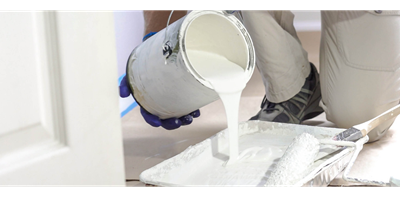
Accurately valuing the contents of your home is important in case you ever need to make an insurance claim. It can be quite a lengthy process to get it right, with lots to consider and people can often underestimate the task by a long way.
The average UK household is thought to own around £35,000 of belongings, but how much are your house contents worth? Here’s our step-by-step guide to how to calculate contents insurance.
EASY AS HACK
Video or photograph each room of your house on your phone to create a digital record of your belongings. While this alone won’t be enough to make a successful claim, it can help you compile a home inventory and provide back-up evidence of ownership.
At a glance
- Remember to include belongings in your loft and outbuildings in your contents valuation
- Insurers usually have a single-item limit for high-value possessions
- Use our home insurance calculator to work out how much contents cover you need
1. Make a list of your possessions
Start by making an inventory of items in each room of your home. While it’s not necessary to list every coaster and notepad, be sure to include anything of value.
Listing items by room can be helpful if you ever need to make an insurance claim on a single room, for example if a burst pipe floods your kitchen.
Home contents essentially describes any item you could take with you if you moved house. Here’s a checklist of some of the items to include in your home contents inventory:
Lounge
- Sofas and armchairs
- Furniture, including cabinets, sideboards, coffee tables and bookcases
- TVs
- DVD/Blu-ray player
- Games consoles and controllers
- Radios, stereos and speakers
- Lamps
- Pictures and ornaments
- Books
- CDs and DVDs
- Clocks
- Mirrors
- Curtains/blinds
- Carpet/rugs
Dining room
- Furniture, including table and chairs, and sideboards
- Crockery, glassware and cutlery
- Pictures and ornaments
- Lamps
- Clocks
- Carpet
Kitchen
Fitted units are classed as part of the structure of your building so shouldn’t be included in contents insurance.
- Freestanding appliances, such as washing machines, dishwashers and tumble dryers
- Fridge/freezer and food stored in them
- Electrical appliances, including kettle, coffee machine, toaster and microwave
- Pots and pans
- Kitchen utensils
- Crockery, glassware and cutlery
- Breakfast table and chairs
- Vacuum cleaner
- Lights
- Clock
- Curtains/blinds
Hall, stairs and landing
- Furniture, including tables and sideboards
- Phone/internet router
- Pictures and ornaments
- Mirror
- Coats and bags
- Carpet/rugs
Bedrooms
If you have fitted wardrobes, they’re part of your building so shouldn’t be included in contents insurance.
- Beds
- Freestanding furniture, including wardrobes, drawers and bedside cabinets
- Soft furnishings, bed line and towels
- Lamps
- Clothes and shoes
- Hairdryer/straighteners
- Cosmetics and toiletries
- TVs/radios
- Alarm clocks
- Curtains/blinds
- Carpet
Home office
- Desk and chair
- Laptop, tablet and printer
- Reference books
- Lighting
- Curtains/blinds
- Carpet/rug
Outbuildings*
- Garden furniture
- Barbecue
- Tools
- Electrical equipment, including lawnmower and hedge trimmers
- Bicycles
*Limits may apply, so please check your policy documents.
Miscellaneous
Remember to include belongings in the loft or basement, and things that might not always be kept in a designated room, including:
- Children’s toys and equipment
- Jewellery, watches and antiques
- Musical instruments
- Sports and exercise equipment
- Activity trackers
- Smart home gadgets, mobiles and tablets
- Hobby equipment, such as craft or art supplies
- Collectors’ items, including coins, medals and stamps
Some insurers also cover digital downloads so will pay out for loss or damage to music, films and books you store on your digital devices, up to a certain amount.
2. Estimate the value of your home contents
Once you’ve made a list of belongings in each room of your home, you’ll need to work out their value.
Most insurers provide ‘new for old’ cover, which means they’ll replace items as new if they get stolen or damaged. So, when you’re estimating the value of your belongings, you’ll need to base this on how much it would cost to replace them today, on a like-for-like basis; rather than on how much you paid for them when you bought them originally.
A quick online search can help you find the cost of replacing most household items. If you can’t find the exact make and model, a similar, specified alternative will be fine.
3. List high-value items separately
There are usually limits on the amount insurers will pay out for high-value items such as jewellery, antiques and family heirlooms, unless you have specified this separately.
For instance, if your insurer has a single item limit of £1,500 and a ring worth £2,500 is stolen from your home, your insurer is likely to pay out the limit of £1,500 if you make a claim. Depending on circumstances, it may be less.
To fully insure a high-value item that exceeds the single item limit, you’ll need to list it separately on your policy, and may have to provide an up-to-date valuation. If you’re not sure how much your most valuable items are worth, it might be worth getting them independently valued.
It’s important to check the terms of your contents policy because, in some cases, it might be more cost-effective to insure your higher value items with a specialist provider.
4. Keep proof of purchase
Find a safe place to keep receipts, guarantees and warranties that prove what you bought and when. are also a useful way of showing proof of purchase.
These will also be your source of reference to check the value of items when you’re updating your insurance, e.g. inflation or other changes.
If you can show this evidence when making a claim, your insurance provider will be more likely to pay out to replace the items you’ve lost.
5. Calculate how much to insure your contents for
The hard part is done now that you’ve estimated how much your house contents are worth. You just need to add up the total and take out the appropriate value of contents insurance you need.
It’s important to be as accurate as possible when taking out insurance so you’ll receive the correct pay-out if your home contents are damaged or stolen. Overestimating the value of your possessions means you could end up paying a higher premium than necessary.
On the other hand, if you underestimate how much your house contents are worth, your policy limit may not cover the value of your possessions.
Once you have your contents value, it’s time to get a quote and choose the best level of cover for your home.
Protect your belongings...
...with home insurance that’s as trusted as Ageas. With over 9,500 5 star Trustpilot reviews, Get a quote today.


